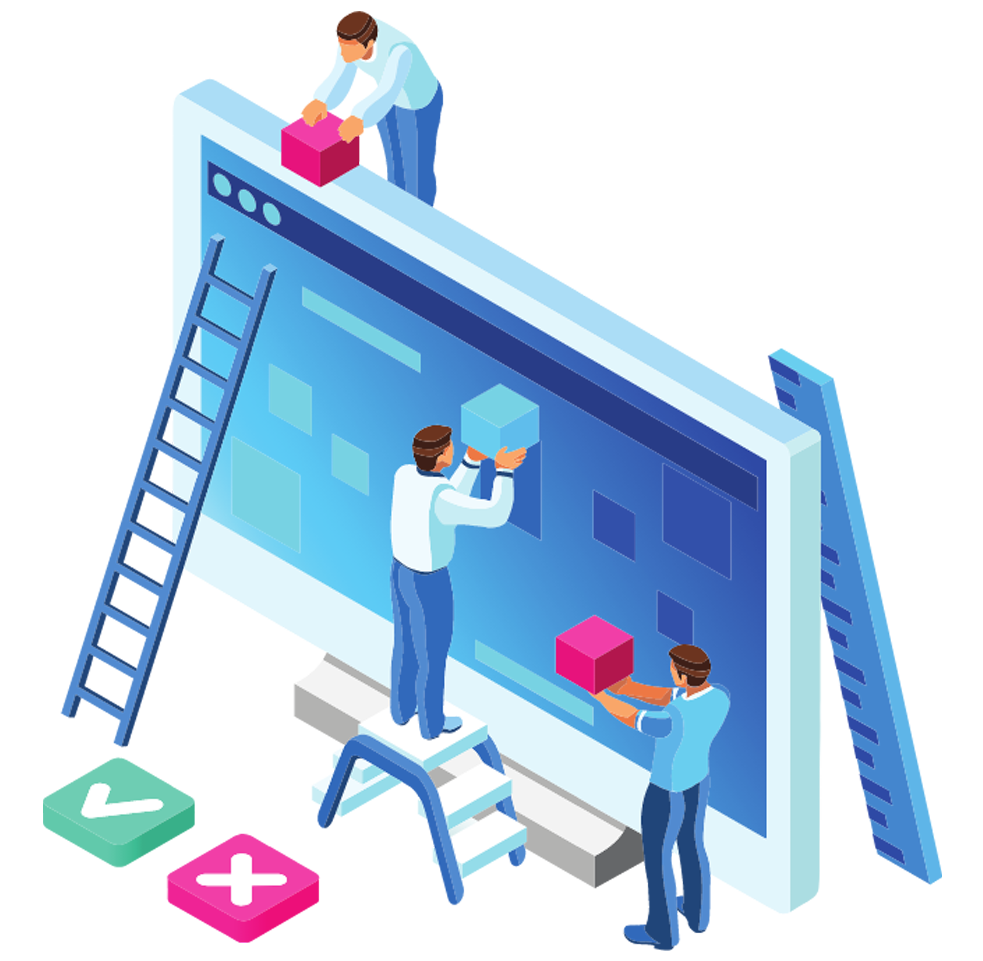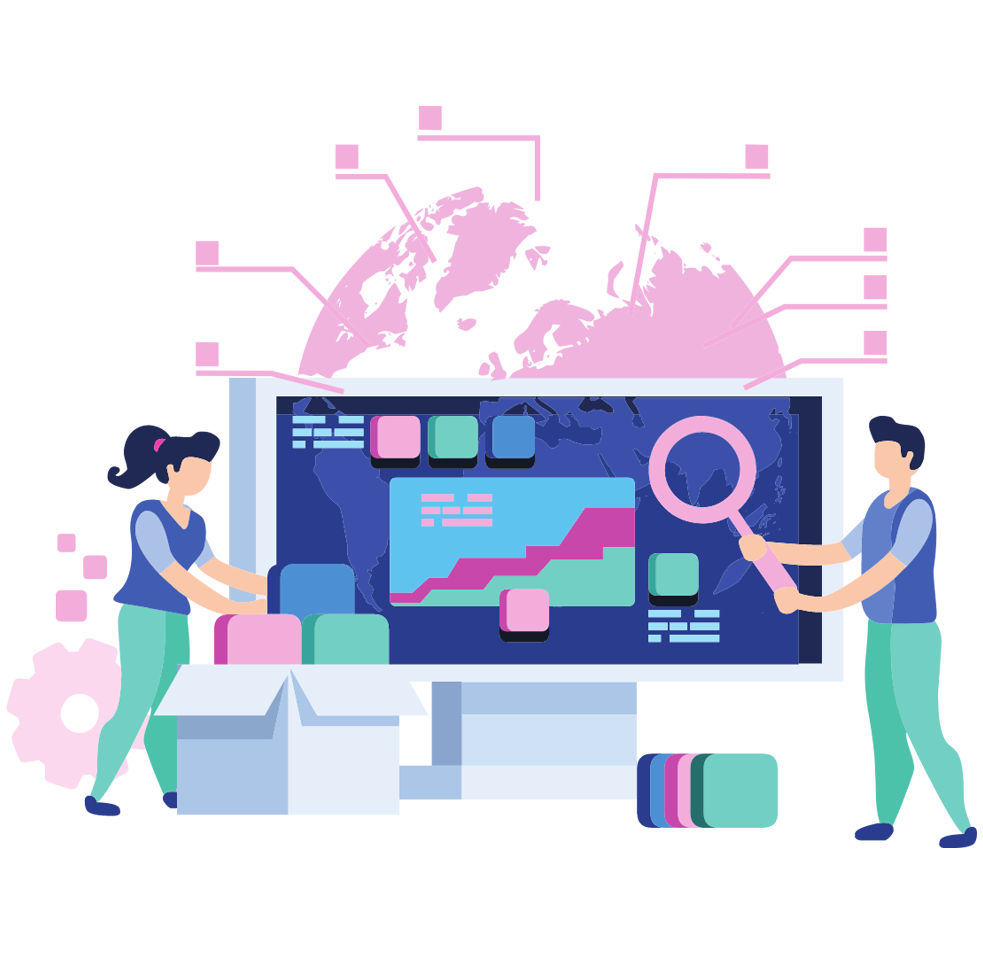Table of Contents:
- Types of Salesforce implementations
- Requirements analysis
- Implementation phase
- Testing phase (UAT)
- Go-live
- Hypercare
- Summary
Anyone who has dealt with IT projects knows that it is often difficult to say how long a project will last. However, in the case of Salesforce, there are certain timeframes within which, in the vast majority of cases, we manage to finalize the implementation. In general, projects are divided into basic (MVP) and more complex ones.
In many cases, companies decide to add new functionality after the tool has already been launched. Then we talk about the continuation of cooperation – the time spent on adding new features is not included in the timeframe, which you will learn about today.
What are the types of Salesforce implementations?
For starters, let’s look at what are the variants of Salesforce implementations and how long they last:
- MVP (maximum project duration: up to 10 weeks);
- SMB (maximum project duration: 12 weeks);
- CBU (minimum project duration: 8 weeks);
- Enterprise (minimum duration of one phase: 12 weeks).
Important: due to the large scale of Enterprise projects, in their case we specify the duration of a single phase.
Regardless of the scale of the project, all Salesforce implementation types have elements in common – we will describe them below. Then we’ll look at the differences in each phase depending on what kind of project we’re dealing with.

Requirements analysis before Salesforce implementation
Analysis in a Salesforce implementation project is a key step that involves understanding the organization’s needs and requirements and developing a roadmap to configure and customize the Salesforce platform to meet those needs. The analysis process is designed to gather information, identify business objectives, and determine the best solutions to fit the customer’s specific needs.
How long does the pre-implementation analysis phase take?
- MVP – about 2 weeks;
- SMB – about 3-4 weeks;
- CBU – about 3-5 weeks;
- ENTERPRISE – as a rule, 2-3 months at the beginning of the implementation project, and before each subsequent phase we prorate the analysis, which takes 2-3 weeks.
The analysis phase varies depending on the project’s scope, that is, how much functionality and customization the implementation is to include. The analysis will take less time for an MVP implementation, and longer for an SMB or Enterprise organization implementation.
Scope of analysis before Salesforce implementation
Let’s now look at the components of this phase of the project.
- Requirements gathering: This begins with meetings and discussions with representatives of the organization to understand their business goals, challenges, and expectations from Salesforce. During these discussions, information is gathered on business processes, functions, reporting, and integration with other systems.
- Analysis of existing processes: The analytics team analyzes the organization’s existing business processes to identify areas that can be optimized or automated using the Salesforce platform.
- Process mapping: Process maps are created that show the steps and stages involved in various business processes. This helps understand how processes will work on the Salesforce platform.
- Creating data models: The data structure needed to support business processes is analyzed. Data models are created that reflect the relationships between different data.
- Identifying customization and configuration: Based on the collected requirements and process analysis, a customization and configuration plan for the Salesforce platform is created. This includes defining fields, objects, dependencies, validation rules, automation processes, and more.
- Creating prototypes: In some cases, you can create prototypes in Salesforce that demonstrate how the defined processes and configurations will work. This allows you to verify and customize them before full implementation.
- Documenting requirements: All requirements collected, process analyses, and customization plans are documented. This is a big help for the team during implementation and in later phases of the project.
The analysis is a key component of a Salesforce implementation project, as it lays the foundation for further activities such as configuration, development, testing, and deployment. Through careful analysis, the Salesforce platform can be better tailored to the needs of a specific organization, which contributes to the success of the implementation and the effectiveness of the system.
Learn about the price of Salesforce implementation

Implementation phase
The timeframe for this part of the project is as follows:
MVP – about 4-8 weeks
SMB – about 8-12 weeks
CBU – approx. 12-18 weeks
ENTERPRISE – approx. 12 weeks/phase.
The actual implementation of the Salesforce platform consists of several key phases, which include planning, configuration, testing, deployment, and maintenance.
Planning
- Defining business goals and expectations.
- Defining the project scope, including functions, processes, and integration.
- Determining the project schedule and resource allocation.
- Selecting appropriate Salesforce modules and solutions.
Configuration and customization
- Creating objects, fields, dependencies, validation rules, and automation processes.
- Creating customized views, panels, and reports.
- Configuring access security and permissions.
User training
- Preparation of training materials for users.
- Organizing training sessions to familiarize users with the new system and its functionalities.
Implementation
- Transferring customization and configuration from the sandbox environment to the production environment.
- Testing the final configuration in the production environment.
- Launching the system for users.
UAT phase – testing of the new platform
UAT (User Acceptance Testing) in the context of a Salesforce deployment refers to the testing process in which end users or business representatives participate in the verification and acceptance of a Salesforce system before it is fully deployed. The purpose of UAT is to make sure that the system meets user expectations and works in accordance with planned business processes. The UAT phase lasts up to three weeks.
UAT is an important phase in a Salesforce implementation project because it allows users to final validate the system before it goes live, which minimizes the risk of errors or incompatibilities in later stages of implementation. Here’s what a typical UAT process looks like in the context of a Salesforce implementation.

How does the testing process work?
Preparing for testing: creating test scenarios, test plans, and a test data set.
Testing: end users run tests that cover various use cases and business scenarios. These may include typical operations that users will perform in the system, such as
- record creation,
- editing data,
- executing reports, etc.
Problem identification: users log any errors, inconsistencies, or potential improvements found. Cases where the system does not work as expected are also reported.
Troubleshooting: the Salesforce implementation team analyzes reported problems and takes corrective action, if necessary. It then updates the system based on this information.
Re-testing: after the fixes are made, users re-test to ensure that the reported issues have been resolved.
Acceptance: If the system meets users’ expectations and works according to business requirements, users accept it as ready for deployment.
A well-executed UAT process makes the Salesforce system ready for full deployment, minimizing the potential risk of post-deployment problems.

Go-live – the green light to launch Salesforce
The Go-live phase is the stage of Salesforce implementation when the new system is officially launched and made available to users in a production environment. This is the moment when an organization moves from the testing and configuration stage to the full use of the new Salesforce platform in daily operations. What does a typical Go-live phase look like in an implementation project?
Final testing: before moving to the Go-live phase, it is important to conduct final testing to make sure that any fixes and customizations made during the testing phase are effective and that the system works properly.
User preparation: before officially launching the solution, you need to make sure that all users are properly informed about the upcoming Go-live. This is obvious, but it is easy to forget.
Implementation plan: prepare a detailed plan for the Go-live day. This includes setting the exact date and time when the new system will be rolled out to the production environment.
Backup and security: before deployment, it is necessary to back up the data of the existing system and create a restore point so that changes can be rolled back in case of problems.
Deployment: at the time of Go-live, the deployment team brings the changes and customizations made earlier into the production environment. This includes, for example, transferring customizations, configurations, data, and other elements.
Monitoring: once the new system is up and running in the production environment, the implementation team monitors its performance to ensure there are no problems, failures, or performance drops.
Support: on go-live day and shortly thereafter, the support team is ready to respond to any problems reported by users. You’ll read more about this phase, called Hypercare, in a moment.
It is also important to keep records of the Go-live process, ongoing activities, and responses to any problems. This information may prove useful in the future.

What is the Hypercare phase?
In the context of a Salesforce implementation, Hypercare refers to the period of intensive customer support right after the launch of a new system, application, or project. This is a period of up to 4 weeks in which the support team on the implementation partner’s side monitors, resolves potential issues, and responds to ongoing challenges that the customer raises in the context of the implementation.
The main objectives of the Hypercare phase are:
Performance monitoring: the Hypercare team monitors system performance and analyzes system performance to quickly identify and resolve problems or failures.
Responding to incidents: if problems occur, the Hypercare team takes corrective action and helps resolve issues to minimize the impact on users and the organization’s operations.
Providing support to users: during the Hypercare period, the team is ready to answer questions and provide support to users who may have problems with the new system or need assistance in using it.
Customization and optimization: Hypercare is also a time to collect feedback and comments on the system from users. The knowledge gathered can be used for further customization and optimization.
The Hypercare phase is a period when the implementation partner intensively supports the customer in all issues related to the functioning of the Salesforce platform
Summary
The duration of the project is affected by factors such as:
- customer needs;
- the size and technological sophistication of its team;
- the presence of the Steering Committee (aka Steerco) and many others.
Salesforce ecosystem implementation and its duration is a complex issue, but we hope this article has illuminated the issue for you, and that you will contact us to discuss an implementation project in your organization! By clicking the banner below, you can easily schedule a free 30-minute call with our expert.








































